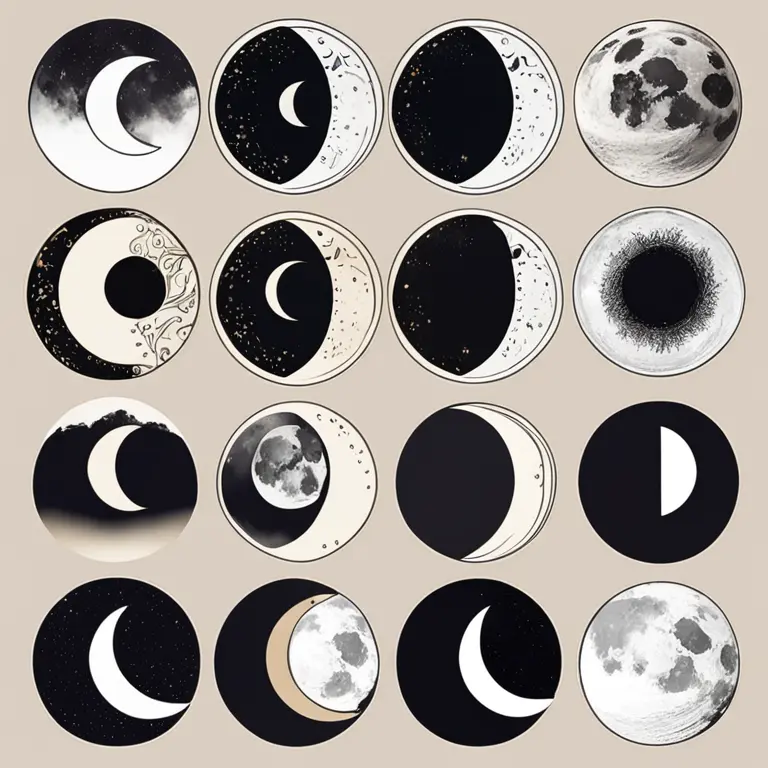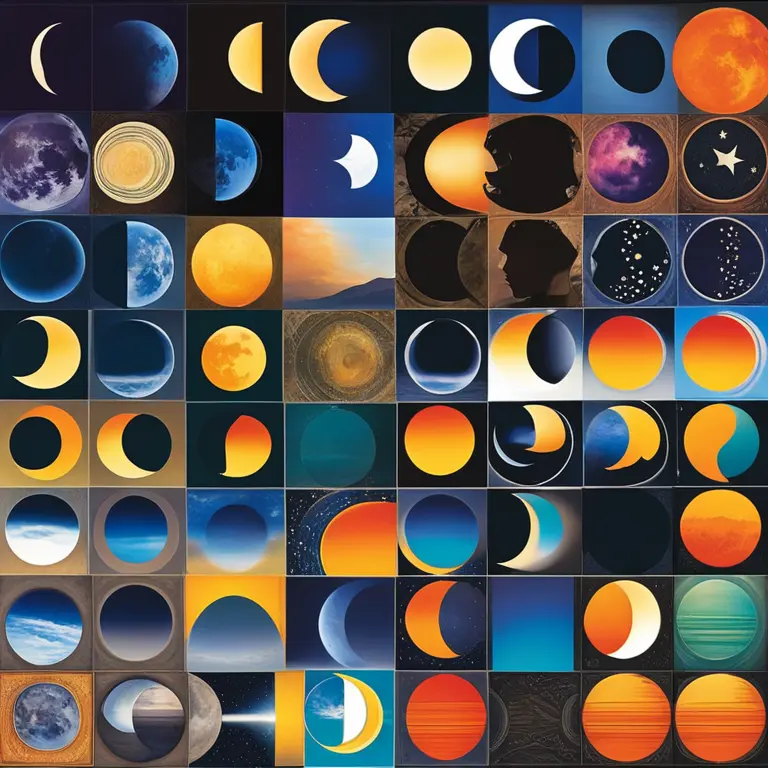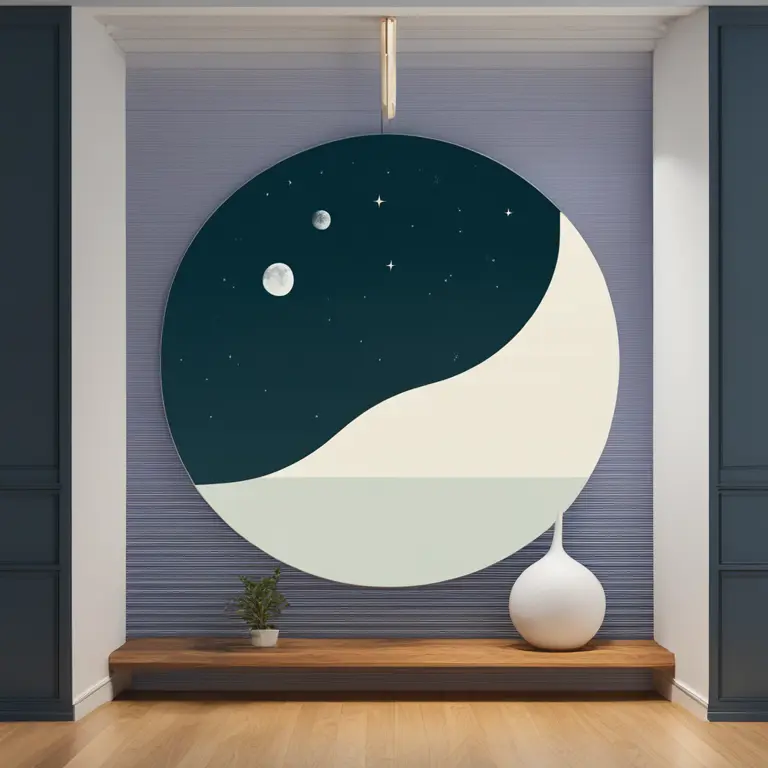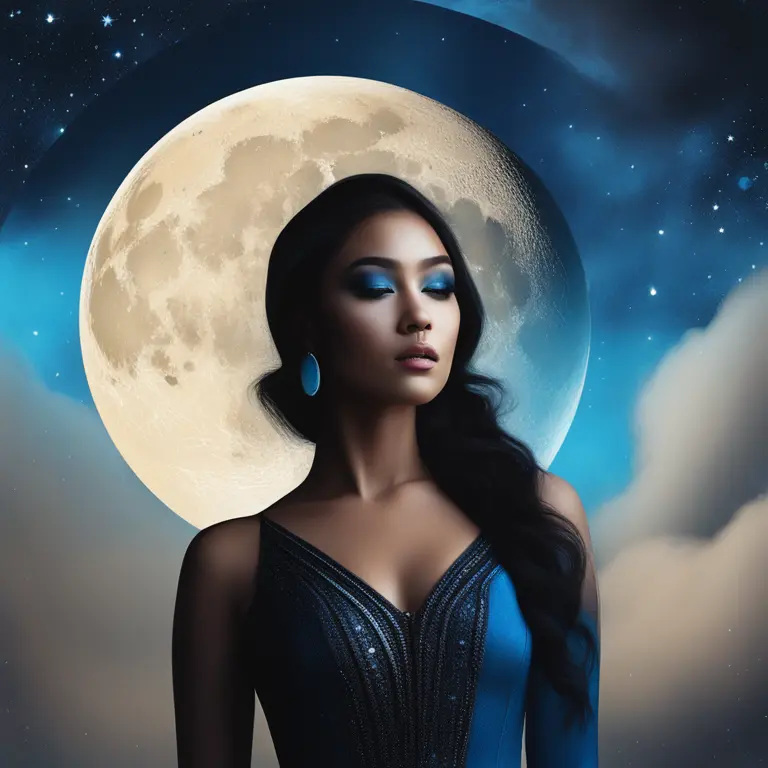
The Lunar Cycle: Causes Behind Moon Phases
Delve into the celestial mechanics that shape the moon's phases, influencing tides, astrology, and more.
article by Priya Deshmukh
The Celestial Dance
The moon's journey across the night sky is an age-old enchantment that has held humanity's fascination since time immemorial. Orbiting Earth every 27.3 days, the moon gracefully waltzes in sync with our planet, perpetually changing its illuminated visage. This ethereal concept, surprisingly, is underpinned by the robust laws of celestial mechanics. The moon phases are simply the different angles of sunlight that our lunar companion reflects back to us as it orbits Earth. It's a cosmic interplay of positions between Earth, the moon, and the sun. As the moon makes its orbital voyage, it presents various portions of its sunlit surface, giving rise to the succession of phases we observe.

The Phase Cycle Beginnings
Our lunar narrative commences with the new moon, when the moon sits between the Earth and sun, keeping its sunlit side away from our view. This marks the start of the lunar cycle, a time often associated with new beginnings in the realm of astrology. The dark silhouette whispers of untapped potential and, as with any commencement, sets the stage for gradual growth. As days pass, a sliver of light emerges on the moon's right side, signifying the waxing crescent phase, a period traditionally seen as optimal for positive intentions and nascent enterprises, spiritually speaking.

Building Up to Full Illumination
Following the waxing crescent is the first quarter, where exactly half of the moon's face is illuminated. This equilibrium symbolizes a point of action and decision-making. Progressing further, the waxing gibbous phase graces the sky as the moon continues to swell with light, a prelude to full brilliance. During this phase, goals are to be nurtured and efforts are to be amplified, according to astrological practice. Culminating the waxing phases, a full moon emerges in its orbicular glory, a sight of wonder and an astrological moment of reflection and realization, carrying energies that will spill into 2024 and beyond.

The Waning Wisdom
After basking in its full light, the moon begins to recede into shadow. The waning gibbous, often termed the disseminating phase, is a period for sharing insights and wisdom garnered from the peak full moon. The third quarter, with its half-dark, half-light visage, serves as a reminder of release and forgiveness, an astrological invitation to let go of what no longer serves our highest good. As the light further diminishes, the waning crescent whispers the necessity of rest, introspection, and preparation as the cycle draws to a close, soon to reset with a new moon's promise.

Celestial Implications for Astrology
Within the realm of astrology, these lunar phases carry profound significance, serving as celestial markers for personal development and spiritual growth. Astrologers closely monitor the moon's cycles, interpreting its various phases as indicators for timing in life events, inner emotional tides, and broader cosmic energies. As we look toward the skies in 2024 and the years that follow, these lunar insights will continue to guide enthusiasts in pursuits of self-awareness and universal connection. The moon's phases remind us of the constant flow of nature's rhythm, and how we, too, are part of this magnificent cosmic ballet.
Published: 1/19/2024
Modified: 1/19/2024
More predictions
Come back here soon to learn more about yourself and your future


The Ace of Wands Tarot Guide: Spark of Inspiration
Ignite your understanding of the Ace of Wands as it heralds potential, creativity, and breakthroughs in tarot readings for future guidance.


Tarot Cards vs Zodiac Horoscopes: A Comparative Guide
Discover the differences between tarot readings and zodiac horoscopes, two popular methods used to gain insights into our lives and futures.


The Tarot Knight of Pentacles: A Symbol of Steadiness
Delve into the symbolism and meaning of the Tarot Knight of Pentacles, a figure representing reliability, dedication, and persistent progress in the Tarot deck.